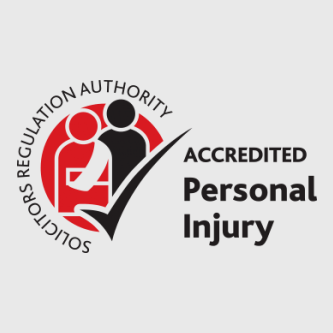Any amputation is a devastating and life-changing experience.
Its effects are far-reaching and varied, with no two cases of amputation being exactly the same. However, there are some overriding features that are common to most forms of amputation, whilst others are more injury-specific.
To assess the total effects of amputation on a person, a number of factors must be taken into account:
- The type of amputation
- The condition of the remaining limb
- Whether a prosthetic limb can be used
- The person’s age
- Their pre-injury health
- Other injuries sustained at the same time as the amputation
- Their domestic situation
- The emotional and psychological effect on the person
- This section provides an overview of the more common effects of amputation.
Physical effects of amputation
The immediate physical effects of an amputation may seem obvious. For example, the loss of a leg will prevent a person from being able to walk without some form of assistance. However, such is the dramatic change to a person’s body, there are several further physical effects that can impact the life of an amputee:
Mobility and dexterity
The main effect of a lower-limb amputation is a reduction of that person’s mobility, meaning that they will not be able to walk as they did pre-injury or surgery. In the majority of cases, after sufficient care and rehabilitation, the injured person will be able to make use of a prosthetic limb.
Meanwhile, the loss of an upper-limb will also affect mobility (most likely affecting a person’s balance). This can make the injured person prone to falls or collisions with objects and people. Whilst they will not usually require a wheelchair, their mobility and agility may be adversely affected, especially in the early stages after the injury.
After someone has undergone an amputation, it is likely that the basic pursuits of daily living will become much more difficult, or perhaps even impossible. Previously straightforward tasks such as food preparation or housework may become a tremendous challenge, and the amputee may be limited in the activities they can perform unaided. Many of these are tasks that we often take for granted, such as getting dressed, washing, or carrying shopping.
Upper-limb amputees who have lost their dominant hand or arm are very likely to have difficulty completing tasks that require manual dexterity, and to compensate for this will need to learn how to use their previously non-dominant limb. For example, one particularly taxing transfer of skill would be learning how to write with their weaker hand.
Stump and phantom limb pain
An amputee may suffer from either stump pain or phantom limb pain, or perhaps even both. Stump pain is felt in the remaining part of the injured limb, and the source of this pain is found in the damaged groups of nerves at the site of amputation.
Meanwhile, phantom limb pain is a very widespread condition that affects up to 80% of all amputees. It refers to the sensation of pain that an injured person feels in their ‘missing’ limb. The word ‘phantom’ does not in any way mean that the pain does not exist; it is all too real to the person suffering from it, but the source of the pain is actually within the person’s brain.
The extent of phantom limb pain differs from case to case. Some people may experience temporary and brief shock-like stabs of discomfort or burning sensations, whilst others report more chronic and unbearable levels of excruciating pain. This phenomenon occurs more commonly in women, and then even more so in those who have lost an upper-limb as opposed to a lower-limb.
Infection
Problems can develop for amputees if the skin on their stump breaks down causing wounds to open. Such occurrences can give rise to infections, and may prevent them from being able to make full use of a prosthetic limb. There may be a problem with blood supply and circulation, culminating in blood clots; or it could be that an excess of moisture has built up at the stump and infected the wounds.
Unfortunately, such infections very often result in further surgical processes to remove more of the extremity, or perhaps even the rest of the remaining limb.
Muscle contractures
A muscle contracture happens when there is an imbalance of the muscles in a limb. Lower-limb amputees are at very high risk of muscle contractures due to the sudden and drastic alteration of their anatomy and central nervous system, as well as the weight-bearing stresses placed on the lower extremities.
Specifically, contractures are a shortening and tightening of the various remaining muscle groups in a limb, and are usually the result of the amputee remaining in one fixed position for an extended period of time, such as when they are bed-ridden at home or in the hospital.
It is important that these contractures are addressed through stretching exercises, so that potentially devastating complications are prevented from developing in the future. For example, if left untreated an amputee may lose the capability to fit a prosthetic limb, which in turn will mean that their mobility is further diminished.
Deep vein thrombosis
Deep vein thrombosis (also referred to as deep venous thrombosis or DVT) is a deep blood-clotting condition that usually affects the lower-limbs of the body. People who have suffered from an amputation of their lower extremities are at a high risk of experiencing this condition, particularly if they have undergone surgical amputation where their limb has been immobilised and tied.
If untreated, a potentially fatal secondary effect called a pulmonary embolism may develop, which is where part of the blood clot breaks away from the leg and travels to the person’s lungs.
Fatigue
The additional effort required by amputees to perform many of the routine activities of daily life can result in increased levels of tiredness and fatigue. For example, this might be from the increased exertion required by a lower-limb amputee to walk with a prosthetic limb, or simply from the fact that many ordinary activities can take longer to complete than previously.
In some cases, the side effects of a person’s pain medication might make them feel more tired or cause them to sleep for longer. In addition, the psychological effects of the injury and accident may disturb a person’s sleep and exacerbate their fatigue.
Emotional effects of amputation
The psychological and emotional effects of losing a limb can be extremely significant, not only on the injured person but also on those close to them such as their family, friends and colleagues.
Traumatic effects
If a person has experienced a traumatic amputation, memories of the incident could cause them to suffer from post-traumatic stress disorder (PTSD) or other similar psychological conditions. Symptoms can include flashbacks; nightmares; depression; insomnia; avoidance; anger outbursts, and various other challenging behaviours.
It is also more likely that a person who has suffered from a traumatic amputation will feel the emotional and psychological impact of their situation more heavily than someone who has undergone a planned surgical amputation because they have not had the time to prepare for the loss of a limb.
Adapting to amputation
Whilst some psychological symptoms are the result of the initial traumatic injury suffered, other symptoms can develop gradually as the amputee lives with their disability. It can be mentally challenging for a person to adapt to the loss of sensation in their missing limb, or alternatively, it could be just as psychologically demanding for a person to suffer from chronic aches and pains.
As a result, depression is a very common consequence, both in the early stages of the injury and also as time progresses. The injured person may well suffer from a feeling of loss in relation to their removed limb, which some amputees have reported as similar to a feeling of bereavement after the death of a loved one.
It may seem like a downward spiral, but with both professional help and the care of the people that surround them, the hope is that the amputee will be able to navigate successfully through the five-stage cycle of grief; from the initial phase of denial and isolation; past anger, bargaining and depression; ultimately arriving at the final stage of acceptance.
Body image
After an amputation, people can be prone to suffering from body image issues, and in particular, they can be self-conscious about the appearance of their injured limb. Such body image issues are the result of an amputee’s internal perception of their own outer appearance and their greater self; and as a person’s body image usually includes four limbs, it can be a very difficult situation to adapt to.
It is not uncommon for an injured person to consciously – or subconsciously – hide their affected limb from sight so as not to draw attention to it, or because of fear about the way other people may react. These body image issues tend not to affect very young children who have undergone amputations, but it becomes more pronounced from adolescence onwards.
Social impact
An amputation can affect a person’s ability to take part in the same social activities, leisure pursuits or hobbies that they would have otherwise enjoyed.
This may be due to practical reasons, such as not being able to participate in physical activities in the same manner as they could prior to their amputation. In addition they may be inhibited by the levels of high levels of pain they experience, or the side-effects of their medication.
Social withdrawal can often result, leaving the injured person feeling isolated. Their personal relationships can be heavily affected, as some amputees completely avoid contact with their friends and peers, or even exhibit outbursts of anger at those loved ones they are still in contact with; most likely those who are helping them and providing care.
Moving Forward
As devastating and debilitating amputation is, it is also quite possible that somebody who has experienced one – be it traumatic or surgical – could react to their situation somewhat positively. Some people have been known to adopt an optimistic outlook, which over time develops into a general feeling of acceptance, making it easier for them to adapt to their situation.
Due to the immediately visible physical effects of amputation, it can be all too easy for people to ignore the psychological impact that it can have on an individual. It is a momentous event in a person’s life, and it is highly important that anybody in such a situation seeks the help and support that they need to rebuild their life.
Hopefully with the right care in place, both professionally and personally, life after an amputation will be happy and fulfilling.









